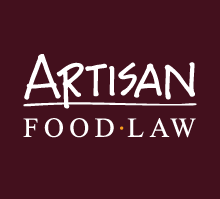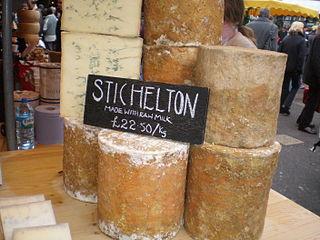Last chance to support the bid to bring back raw milk Stilton
There remain only a few days in which you can show your support for the return of traditional raw milk Stilton cheese. 'Stilton' is an EU protected food name and Defra is currently considering two applications to amend the product specification pursuant to Regulation (EU) 1151/2012 on quality schemes for agricultural products and foodstuffs.
The first is made by The Original Cheese Company which, in a well-publicised move, is seeking the inclusion of “the parish of Stilton in Cambridgeshire” within the defined geographical area of production which is currently limited to Leicestershire, Derbyshire and Nottinghamshire.
The second, which has received rather less media attention but is arguably far more significant, comes from Stichelton Dairy which has requested that the product specification be amended so that Stilton cheeses can be made using pasteurised or unpasteurised full cream cow’s milk. Presently, only the former is permitted under the specification. Stichelton cheese is regarded by many to be the most authentic and traditional Stilton cheese but it cannot bear the name because it is made with unpasteurised or raw milk.
It is arguably an accident of history that raw milk was not included in the original product specification. When the original application for Protected Designation of Origin (PDO) status was made in 1994 only pasteurised milk was in use. Colston Bassett dairy was the last factory based dairy to produce Stilton cheese from raw milk but changed over to pasteurised milk in 1989. If raw milk had still been in use in 1994 it is highly probable that its use would have continued and provision would have been made in the product specification in the manner now sought.
Some opponents of the amendment raise food safety issues surrounding raw milk. Where milk is collected from many farms across a wide geographical area the use of raw milk might be said to pose an additional level of health risk. Patrick Rance, the great crusader for traditional British farmhouse cheeses, commenting on the rise of pasteurised milk in the production of Stilton recalled one producer's statement:
"Nuttall's explained to me in 1974 that their bulked milk (from forty-nine farms then) might contain antibiotics, and that yeasts associated with mould could cause the milk to froth over in the vat; they had to pasteurise it to kill it. It is regrettable that sloppy dairy farming should be allowed to change cheese."*
Standards of milk production have undoubtedly improved since the 1970s. There are also many raw milk cheeses produced in the UK with a demonstrably good safety record. What's more, the raw milk used by Stichelton Dairy is produced by a single herd of cows on the same site where the cheese is made so quality can be strictly managed.
Furthermore, the preamble to the regulations, which plays an important role in the interpretation of the articles in a regulation, make no reference to food safety issues which are comprehensively addressed in other measures. In short, food safety issues are not relevant to a decision on the amendment to the product specification. The case in support of the amendment is overwhelming and a favourable outcome would delight cheese lovers far and wide.
Finally, it is worth pointing out that the amendment would not compel all Stilton to be made from raw milk in the future. It would have no impact on existing Stilton producers using pasteurised milk. It will simply mean that dedicated artisan cheese makers such as Joe Schneider at Stichelton Dairy can make Stilton in the time honoured way using raw milk - and call it Stilton!
Over to you, all you need do is send an e-mail to protectedfoodnames@defra.gsi.gov.uk stating that you support the Stichelton Dairy application to amend the product specification for Stilton cheese and return a great cheese to its true roots. You can add points to reinforce your support if you wish, but remember you only have until 29 May to do so. If you do you will then have until 31 July to submit more detailed comments should you choose to do so.
If you want to delve into the history of a great cheese try Trevor Hickman’s Stilton Cheese – a history, Amberley Books, 2012.
Photo credit: ©Stephanie Watson from Brighton, England (Borough Market, cheese stall) [CC-BY-2.0 (http://creativecommons.org/licenses/by/2.0)], via Wikimedia Commons
* Patrick Rance, The Great British Cheese Book, Macmillan, 1982, p46





